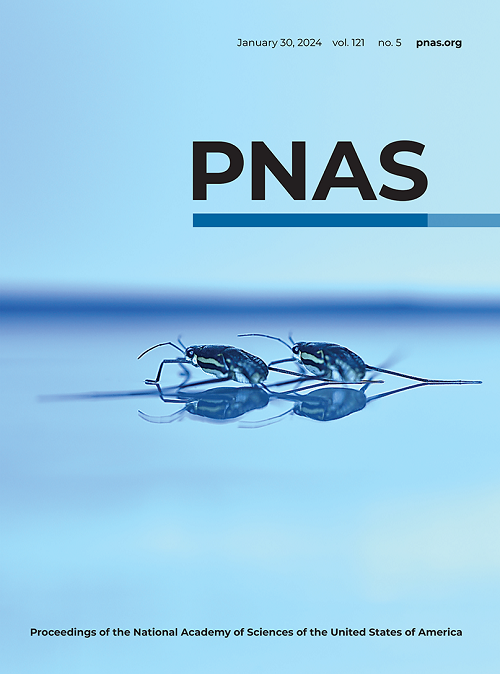Tautomerism induces bending and twisting of biogenic crystals
IF 9.4
1区 综合性期刊
Q1 MULTIDISCIPLINARY SCIENCES
Proceedings of the National Academy of Sciences of the United States of America
Pub Date : 2025-07-21
DOI:10.1073/pnas.2426814122
引用次数: 0
Abstract
Understanding and exploiting material flexibility through phenomena such as the bending and twisting of molecular crystals has been a subject of increased interest owing to the number of applications that benefit from these properties, such as optoelectronics, mechanophotonics, soft robotics, and smart sensors. Here, we report the growth of spontaneously bent and twisted ammonium urate crystals induced by the keto–enol tautomerism of the urate molecule. The major tautomer is native to biogenic crystals, whereas the minor tautomer functions as an effective crystal growth modifier to induce naturally bent and twisted ammonium urate crystals. We show that the degree of curvature can be tailored based on the judicious selection of growth conditions. A combination of state-of-the-art microscopy and spectroscopy techniques are used to characterize the origin of bending. Spatially resolved nano-electron diffraction and high-resolution electron microscopy of naturally bent crystals show nearly single crystallinity with local lattice deformations generated by a combination of screw and edge dislocations. These observations are consistent with photoinduced force microscopy and contact resonance atomic force microscopy, which confirmed spatially resolved changes in the intermolecular interactions and the mechanical properties throughout the cross-sectional and axial regions of bent crystals. A mechanism of bending involving the generation of regionally specific dislocations is proposed as an alternative to more commonly reported models. These findings highlight a unique characteristic of tautomeric crystals that may have broader implications for other biogenic materials.互变异构体诱导生物晶体的弯曲和扭曲
由于光电子学、机械光子学、软机器人和智能传感器等应用受益于这些特性,通过分子晶体的弯曲和扭曲等现象来理解和利用材料的灵活性已经成为人们越来越感兴趣的主题。在这里,我们报道了由尿酸盐分子的酮烯互变异构诱导的自发弯曲和扭曲的尿酸铵晶体的生长。主要的互变异构体是原生的生物晶体,而次要的互变异构体是有效的晶体生长调节剂,可以诱导自然弯曲和扭曲的尿酸铵晶体。我们表明,曲率的程度可以根据生长条件的明智选择量身定制。结合最先进的显微镜和光谱学技术,用来表征弯曲的起源。自然弯曲晶体的空间分辨纳米电子衍射和高分辨电子显微镜显示,自然弯曲晶体的局部晶格变形是由螺旋位错和边缘位错共同产生的。这些观察结果与光诱导力显微镜和接触共振原子力显微镜一致,证实了弯曲晶体在横截面和轴向区域的分子间相互作用和力学性能的空间分辨变化。一个机制的弯曲涉及产生区域特定位错被提出作为替代更常见的报告模型。这些发现突出了互变异构晶体的独特特征,可能对其他生物材料具有更广泛的意义。
本文章由计算机程序翻译,如有差异,请以英文原文为准。
求助全文
约1分钟内获得全文
求助全文
来源期刊
CiteScore
19.00
自引率
0.90%
发文量
3575
审稿时长
2.5 months
期刊介绍:
The Proceedings of the National Academy of Sciences (PNAS), a peer-reviewed journal of the National Academy of Sciences (NAS), serves as an authoritative source for high-impact, original research across the biological, physical, and social sciences. With a global scope, the journal welcomes submissions from researchers worldwide, making it an inclusive platform for advancing scientific knowledge.

 求助内容:
求助内容: 应助结果提醒方式:
应助结果提醒方式:


